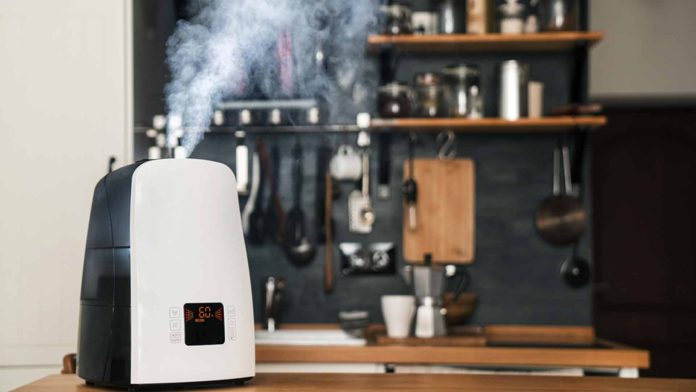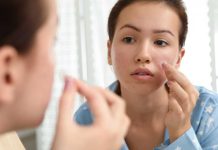
(HealthyResearch.com) – Even though the US took over as the country with the most Coronavirus cases in the world on Thursday, March 26, new data and progress toward treatments and vaccines provided points of light in seemingly dark skies. Testing in the US ramped up during the last 7 days, allowing officials to have a better understanding of where the virus hotspots are and how many critically ill people there are so far. However, new data also brought to light new risks based on the longevity of the virus on different surfaces and on the failure of certain groups of people to isolate themselves. Here are five approaches you can take to help contain your risks.
1. Mindfulness When Accepting Deliveries
The most recent data released by the Centers for Disease Control and Prevention (CDC) found viable RNA from SARS-CoV-2 on surfaces after 17 days. They were testing cabins in the cruise ships the Diamond Princess and Grand Princess.
Timeframes for the virus’s viability vary, but results of an earlier study released by the National Institutes of Health show the virus can survive from a few hours to several days after a person coughs or sneezes.
- Up to 3 hours in aerosol form
- Up to 4 hours on copper.
- Up to 24 hours on cardboard.
- Up to 3 days on plastic and stainless steel.
On that basis, anyone and anything that arrives at your doorstep could unknowingly be carrying the novel coronavirus. As a safeguard, keep your distance from all delivery people and sanitize all mail and deliveries before you bring them in using a spray disinfectant approved by the EPA for use against SARS-CoV-2. Remove and sanitize contents of boxes, dispose of the boxes outside your home, and wash your hands well.
Similar to the cruise ship data, a study released in the Journal of Hospital Infection showed the novel coronavirus’s deadly cousins, SARS and MERS, could survive on some surfaces for up to 9 days. Taking extra precautions with mail and packages seems warranted based on this new information,
2. Continued Social Distancing
We now know that people can become infectious long before symptoms show, so even someone who looks healthy could be transmitting the virus. Practice social distancing by standing or sitting at least 6 feet apart, even if you and other people look and feel fine. We can only flatten the infection rate curve if we keep the virus from being passed between us, and that’s not going to happen unless we all hunker down for a while.
In stunning defiance of social distancing, young adults in Kentucky recently gathered for a Coronavirus Party, ultimately resulting in one person being hospitalized. But their lack of responsibility and empathy wasn’t an isolated case. Young people packed beaches, bars, and clubs in Florida for Spring Break, ignoring official pleas for social distancing and prompting state officials to close restaurants, bars, clubs, beaches, and state parks in an attempt to gain compliance.
Some younger people might believe they are impervious to COVID-19, but 54% of New York’s cases are currently between 18 and 44 years old. Nearly 20% of those hospitalized in New York fall into this demographic.
3. A Clean Home Is a Safer Home
Protecting your home by keeping it clean and disinfected is especially important. Try to regularly clean communal surfaces like doorknobs, countertops, railings, toilet handles, faucet handles, light switches, refrigerator doors and remote controls.
For nonporous surfaces, the CDC recommends using a solution of 1/3 cup of bleach to 1 gallon of water. (Never mix bleach with other types of household cleaners). You can also use one of the many EPA-approved disinfectants.
Steam-clean carpeting and wash other porous surfaces as appropriate for the materials. Contact the manufacturer if you’re unsure how to safely clean an item. You can usually toss stuffed animals and pillows in the washer and dryer.
4. Precautions With Laundry Eliminate Contamination
It’s challenging to control what you or others might track in from the outside, even on your clothing. If you wash clothes and bedding using hot water, bleach or a laundry sanitizer you can keep germs from spreading through your laundry. Clean, sanitized laundry baskets will also eliminate cross-contamination.
5. Clean, Humid Air Adds Protection
Your house air can be cleaned by running an air purifier equipped with a UV filter. The ultraviolet light will sterilize just about anything that passes through it. A humidifier can add even more protection. Studies on influenza viruses have shown higher humidity levels can reduce the length of time airborne viruses stay viable. One recent study showed that indoor humidification lowered the risk of COVID-19 transmission in hospitals and other buildings.
Even though a pandemic can be scary, it’s possible to get through it by taking precautions. Social distance, extra cleaning, humidification, laundry sanitation and cleaning mail and packages as they arrive will give your home and your family the best chance of staying the safe, healthy, cozy haven it’s always been! And remember to wash your hands!
~Here’s to Your Health & Safety!
Copyright 2020, HealthyResearch.com
















